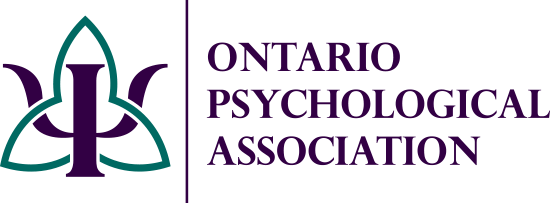Obsessive-Compulsive Disorders
Obsessive-Compulsive Disorders
Obsessive-compulsive disorder (OCD) is characterized by a pattern of unwanted thoughts and/or fears, known as obsessions, that lead an individual to perform repetitive behaviours, known as compulsions. These obsessions and compulsion interfere with an individual's daily activities, and cause significant distress in their lives. It is normal to double check that things are unplugged or turned off, or to even have an occasional unpleasant thought. However, if you suffer from obsessive-compulsive disorder (OCD), these obsessive thoughts and compulsive behaviours become so time consuming that they begin to interfere with daily life.
What are Obsessions?
OCD obsessions are repeated, persistent and unwanted thoughts, urges, or mental images that are intrusive and cause anxiety, fear, or distress. Individuals may try to ignore these thoughts or get rid of them by performing a compulsive behavior. Obsessions often have themes such as:
- Fear of contamination or dirt
- Doubting and having difficulty tolerating uncertainty
- A need for orderliness or symmetry
- Aggressive thoughts about losing control, or harming yourself or someone else
- Unwanted thoughts including aggression, or sexual or religious subjects
Signs and symptoms of obsessions may include:
- Fear of touching objects others have touched
- Doubting that you’ve locked a door or turned off the stove
- Images of driving your car into a crowd
- Thoughts about shouting obscenities or acting inappropriately in public
- Unpleasant sexual images
- Avoiding situations that could trigger obsessions (e.g. shaking hands, going out)
What are Compulsions?
OCD compulsions are repetitive behaviors that individuals feel driven to perform. These behaviours are performed in an attempt to reduce anxiety related to obsessions or to prevent something bad from happening. However, engaging in compulsions often brings no pleasure and only offers temporary relief. As with obsessions, compulsions also have themes such as:
- Washing or cleaning
- Checking
- Counting
- Orderliness
- Following a strict routine
- Demanding reassurance from others
Signs and symptoms of compulsions may include:
- Hand washing until skin becomes raw or irritated
- Checking doors to make sure they’re locked
- Checking the stove repeatedly to make sure it is off
- Counting in certain patterns
- Silently repeating a prayer, word, or phrase
- Arranging canned good to face the same way
How is Obsessive-Compulsive Disorder treated?
OCD FAQs
What’s the difference between OCD and being “a perfectionist”?
Being a perfectionist usually means having very high standards and sometimes being overly critical of one’s mistakes. While this can create stress, perfectionism on its own doesn’t usually involve the overwhelming anxiety and repetitive behaviours that impact daily life seen in Obsessive-Compulsive Disorder (OCD).
What are the most common signs of OCD?
Common signs of OCD include excessive cleaning or hand washing, checking, counting, or repeating actions to reduce anxiety. Individuals with OCD often know their behaviours are irrational but feel unable to stop them.
Can children or teens have OCD, and what does it look like?
People of any age can struggle with symptoms of OCD. OCD in children may show up as repetitive rituals, fears of contamination, needing things in a “just right” order, or frequent reassurance-seeking. Early intervention can make a big difference in the development of OCD symptoms.
Body Dysmorphic Disorder
Body dysmorphic disorder is a type of
obsessive-compulsive disorder
in which a person spends significant amounts of time worrying about flaws in their appearance, often which are noticeable to others. As a result, individuals with this disorder often see themselves as ugly and avoid social exposure because of their flaws. Sometimes individuals will even turn to plastic surgery to try to improve their appearance. Individuals of any age can suffer from body dysmorphic disorder but it is most common in teenagers and young adults. The most common areas of concern for people with body dysmorphic disorder are skin imperfections, hair, facial features, or body weight. In men, body dysmorphic disorder often takes the form of muscle dysmorphia, a preoccupation with muscle building. When untreated, body dysmorphic disorder can lead to
depression ,
self-harm , or
suicidal thoughts .
Symptoms of body dysmorphic disorder can include:
- Recurring obsessive thoughts about a specific area of the body
- Spending a lot of time comparing your appearance
- Negative body image
- Attempting to minimize the appearance of a flaw using makeup or clothing
- Looking at yourself in mirrors a lot or avoiding mirrors
- Going to a lot of effort to conceal flaws
- Engaging in compulsive behaviors related to obsessive thoughts (e.g looking in mirrors or picking at skin)
- Constantly asking for reassurance regarding the perceived defect
- Feeling self-conscious and not wanting to go out in public
- Repeatedly consulting with medical specialists or plastic surgeons to find ways to improve or change appearance
- Overexercising
- Experiencing problems at work or school or in relationships due to obsessions
How is Body Dysmorphic Disorder treated?
Cognitive behavioural therapy (CBT) has been found to help individuals with body dysmorphic disorder manage symptoms, learn what triggers obsessive thoughts, and learn coping strategies. Additionally, exposure therapy can help face situations in which an individual would normally think obsessively about their appearance.
If you’ve experienced any of the above symptoms, you may be suffering from body dysmorphic disorder. Contact us for a free 15 minute phone consultation to see how we can help.
Hoarding Disorder
Hoarding disorder is an obsessive-compulsive disorder (OCD) that can be characterized as a persistent difficulty discarding or parting with objects or possessions because of a perceived need to save them. An individual with hoarding disorder will often experience emotional distress at the thought of discarding these items, often causing excessive accumulation of objects and clutter. Hoarding disorder is one of the most dangerous types of OCD as an unhygienic environment and immense clutter can be safety concerns.
Signs and symptoms may include:
- Excessive acquisition of item that are not needed or for which there is no space
- Persistent difficulty throwing out items, regardless of actual value
- Being upset by the thought of discarding items
- Building up of clutter to the point where rooms are unusable
- A tendency towards indecisiveness, procrastination, problems with organizing, avoidance, or perfectionism
- Conflict with others who try to reduce or remove clutter from your home
- Disorganized piles or stacks of items (e.g. newspapers, clothes, paperwork, books, or sentimental items)
- Losing important items (e.g. money, bills) in the clutter
- Obsessive thoughts and actions: fear of running out of an item or of needing it in the future; checking the trash for accidentally discarded objects
- Refusing to let people into the home for repairs or for social gatherings
- Major distress or problems in social, work, or other domains of life
Hoarding vs. Collecting
Hoarding is not the same as collecting. Collectors look for specific items and usually organize or display these items. Individuals with hoarding disorder often save random items and store them in disorganized ways.
Types of Hoarding Disorder
Hoarding can be divided into three categories:
- Sentimental Hoarding - Objects kept have emotional significance, making them hard to discard.
- Deprivation Hoarding - Being unable to throw away an item because it may be needed in the future, no matter how unlikely such a situation is.
- Preventing Harm to Others Hoarding - Holding on to certain items such as broken class or even human waste because it may harm others.
How is Hoarding Disorder treated?
Excoriation Disorder
Excoriation Disorder (also known as dermotillomania), or compulsive skin picking, is a type of obsessive-compulsive disorder, in which individuals experience an overwhelming urge to pick their skin. This urge to pick one’s skin may or may not be triggered by a visible scab or other mark. The most common sites for skin picking are the face, arms, and hands, although others body parts can be picked as well. Episodes of picking can last anywhere between several minutes to several hours. In order to pic skin, individuals may use their fingers, tweezers, pins, or other objects.
As in individuals with trichotillomania, individuals with excoriation also report that their picking behaviour is either focused or automatic. Focused picking typically occurs in a response to an internal state (e.g. anxiety, sadness, stress, shame) or triggered by an stressful external event and is used to relieve tension or distress. Automatic picking occurs out of the individual’s awareness, often while watching television or reading.
Some signs and symptoms of excoriation may include:
- Compulsive picking of skin
- Repeated but unsuccessful attempts to reduce or stop picking
- Increased tension prior to picking or when trying to resist picking
- Developing skin lesions or scars because of picking
- Ongoing picking despite obvious signs of damage (e.g. open sores, scars) or infections
- A sense of pleasure or relief after skin is picked
- Repeated scratching to eliminate “imperfections”
- Spending large amounts of time picking
- Avoiding public events because of their skin
- Significant impairment or disruption in life functioning
Picking at scabs or bumps, or popping a pimple from time to time isn’t uncommon. However, for some people skin picking can become chronic. This frequent picking can irritate the skin and cause new sores to form, which can cause scabbing or scarring. Many individuals with excoriation disorder often suffer from obsessive-compulsive disorder (OCD).
How is Excoriation Disorder treated?
Trichotillomania
Trichotillomania, or compulsive hair pulling, is a type of obsessive-compulsive disorder, in which individuals experience an overwhelming urge to pull out their hair. The most common sites for hair pulling are the scalp or face, although individuals may pull hair from other areas such as arms, legs, public region, underarms, or other areas of their body. Episodes of pulling can last anywhere between several minutes to several hours. In order to extract hair, individuals may use their fingers or tweezers to pull one hair at a time. Pulling out large clumps of hair at once is unusual in these cases. Individuals with trichotillomania engage in two types of behaviours: focuses and/or automatic pulling. Focused pulling typically occurs in response to an internal state (e.g. anxiety, sadness, stress, shame) or triggered by an stressful external event and is used to relieve tension or distress. Automatic pulling occurs out of the individual’s awareness, often while watching television or reading.
Some signs and symptoms of trichotillomania may include:
- Compulsive pulling of hair
- Repeated but unsuccessful attempts to reduce or stop pulling
- Increased tension prior to pulling or when trying to resist pulling
- A sense of pleasure or relief after hair is pulled
- Biting, chewing, eating, or playing with pulled out hair
- Noticeable hair loss or bald spots due to hair pulling
- Skin irritation at affected sites
- Significant impairment or disruption in life functioning
Many people with trichotillomania may not know that they have a condition and may simply view hair pulling as a bad habit. For others, the compulsive urge to pull hair can be overwhelming and cause significant distress and impairment in their lives.



